The 30 Best Hip-Hop Albums of the 2010s
Artwork by Soleil Collins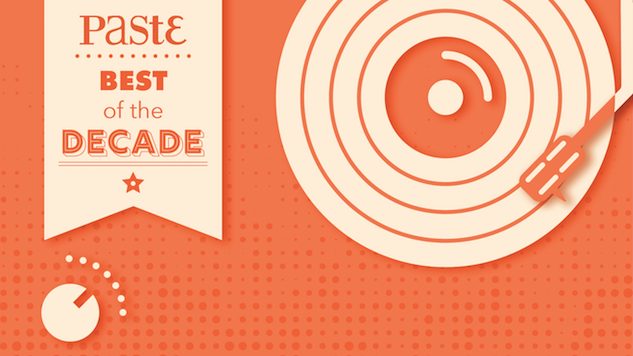
Where to begin when writing about the genre that defined the decade? Hip-hop remains one of our purest forms of protest and release. This has been true for years and years, but it’s been particularly interesting to witness American hip-hop artists work through a decade that began inside a bubble of optimism, one that bursted in the second half of the 2010s. While this decade wouldn’t necessarily be categorized as hip-hop’s heyday (that’s what the 1990s are for, after all) it was a truly distinct time period in which rappers experimented and pushed the genre’s limits, perhaps more than in any hip-hop age before. Sub-genres flickered up in America’s cities—trap remained king in Atlanta, drill music continued to bloom in Chicago, bounce informed the New Orleans sound and Houston artists like Solange and Travis Scott transformed underground chopped and screwed sounds for a pop audience. In the 2010s, rap got weird. Rap went indie. Rap went pop. Pop went rap. Rap was everywhere. You can stan for the ’90s golden era of hip hop, or maybe vouch for the 2000s boom, but you can’t deny the evolution of the genre in the 2010s. So, from music’s biggest names like Kendrick and Kanye to Odd Future glow-ups like Earl Sweatshirt and Tyler, The Creator, here are the best hip-hop albums of the decade, as voted by the Paste Staff.
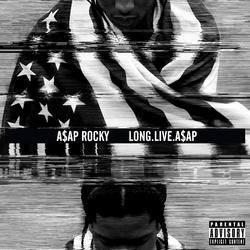 30. A$AP Rocky: Long. Live. A$AP (2013)
30. A$AP Rocky: Long. Live. A$AP (2013)
When RCA threw $3 million behind A$AP Rocky, it wasn’t just investing in the Harlem rapper. It was investing in a whole A$AP empire, backing not only Rocky’s debut album but also his group label A$AP Worldwide, a potential farm system for other up-and-comers who run in Rocky’s Internet circles. For his part, Rocky was to serve as the telegenic public face of this empire, a gateway to the odd, luxuriant strains of rap that thrive online, just below radio’s radar. It sure seems like a vote of no confidence, then, that instead of introducing listeners to Rocky’s codeine-and-cashmere aesthetic, the first real single from Rocky’s RCA debut, Long. Live. A$AP, was “Fucking Problems,” a DJ Khaled-less DJ Khaled track carried by a slick Drake verse, a boffo 2 Chainz chorus, and a sure-thing beat from Noah “40” Shebib. The track also tosses in a Kendrick Lamar guest spot, which only further crowds Rocky out of what was supposed to be his spotlight. Rocky doesn’t have the kind of presence to stand out against all those bigger names. Though he raps proficiently, with ample confidence and a nimble tongue, he’s a flat personality who regards his shallowness and vanity as his best qualities. “Pussy, money, weed / All I really need,” he raps on “PMW,” and with the exception of fashion, that’s about all he ever raps about. His gift, then, is his exceptional ear. His exemplary production tastes carried his breakthrough 2011 mixtape, Live. Love. A$AP, and he never sounds more at home on his commercial debut than when he’s reunited with some of its producers, especially Clams Casino, who contributes two sterling tracks. —Evan Rytlewski
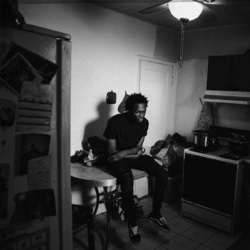 29. Saba: Care For Me (2018)
29. Saba: Care For Me (2018)
There were flashier stories from the Windy City in 2018. There was Noname’s victory lap, CupCakke’s unabashed self-love, and Valee’s world-conquering flow. But no artist embodied what 2018 meant for Chicago more than Saba. In a year of often overwhelming national cruelty, the city found itself looking toward some sort of light on the horizon. Embattled mayor Rahm Emmanuel announced he would not be seeking re-election. Jason Van Dyke was convicted of murder. It’s not much, but it’s something. Saba’s Care For Me takes a similar tack through tragedy and toward grace. The rapper’s cousin and fellow Pivot Gang member John Walt (aka Walter Long Jr.) was murdered in 2017, and his death shadows every corner of the record. From opener “BUSY/SIRENS,” where Saba ponders how “Jesus got killed for our sins, Walter got killed for a coat,” to album high-point “PROM/KING,” a harrowing, heartbreaking account of he and his cousin’s friendship, death hangs over all here. But despite it all, he hasn’t given up. “I just hope I make it ‘til tomorrow,” he says at the end of “PROM/KING.” Saba and the city that raised him are growing through darkness. They may still be far from the light, but they’re also far from done. —Justin Kamp
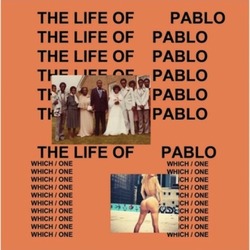 28. Kanye West: The Life of Pablo (2016)
28. Kanye West: The Life of Pablo (2016)
“Name one genius that ain’t crazy,” Kanye West requests on “Feedback,” a hypnotic, erratic highlight from his seventh LP (eighth if you count his Watch the Throne collaboration with Jay Z), The Life of Pablo. The line reads like a throwaway for a lyricist of Kanye’s caliber, but it resonates in the album’s real-life context, as the rapper-producer’s bizarre Twitter rants and obsessive tracklist fiddling have prompted some spectators (including former collaborator Rhymefest) to question his mental stability. “I been out of my mind a long time,” Kanye raps over droning synth tones. “I been saying how I feel at the wrong time.” Where previous Kanye albums were rolled out with red-carpet hype, Pablo felt like a purposeful clusterfuck. Not only did he unveil the tracklist on a piece of fucking notebook paper, he scrapped it multiple times. The album’s various title shifts—damn, I really miss Swish—dominated headlines for months. He hadn’t even arrived at a definitive product after unveiling the songs at a high-dollar Madison Square Garden fashion event. The final album drop, hyped on an uneven SNL performance, was protracted and filled with technical glitches. (Adrift in Pablo’s turbulent waters, you get the sense the songs still aren’t finished. And they might not be: Kanye recently tweeted he was going to “fix ‘Wolves,’” failing to explain what that might entail.) One thing’s clear: Kanye is searching for answers. Weeks before its release, he defined Pablo as “a Gospel album”—the equivalent of constructing a steeple on a Walmart and calling it a church. This isn’t a gospel album, despite its occasional, vivid bursts of feel-the-spirit belting (that’s Kirk Franklin on opener “Ultralight Beam”) and Christian references. In fact, Kanye’s never focused so hard on carnal pleasures, often aggressively so. The Life of Pablo is a fucking mess—the scattered, contradictory work of an icon straining to keep up with his own brilliant pace. “But I’mma have the last laugh in the end,” Kanye promises. Pablo is just powerful enough to keep the faith. —Ryan Reed
 27. Danny Brown: Old (2013)
27. Danny Brown: Old (2013)
Danny Brown is a funny guy. Some might see the missing tooth, the long messy hair, the tongue sticking out of his mouth and the infectious smile, and cast Brown as rap’s goofy class clown. But, even the most cursory investigation into Brown reveals that he’s not just funny; he’s hysterical. Seriously, watch the Over/Under he did on Pitchfork. Little is better than those few minutes with Danny Brown. Brown’s lively performances and tendency to play his features more for laughs than for insights has led to disparate views of the rapper, with the initiated well aware of the talent he possesses and cloaks behind stoner humor and misogyny, and others seeing him as a cultural meme, a media creation serving the purpose of entertainment until his schtick becomes old. It’s also funny that Danny Brown has named his first proper album Old. The follow-up to the free download XXX, Old dispels the shallow views of Brown and paints the rapper in a humanizing and relatable way, with enough bangers and one-liners to not bury the appeal of his personality. More than ever, Old allows even passive listeners to care about what Brown is saying, to form a bond with him and to trust there is more of interest to him than women and drugs. —Philip Cosores
 26. Freddie Gibbs and Madlib: Piñata (2014)
26. Freddie Gibbs and Madlib: Piñata (2014)
The best hip-hop this decade still paid homage to the jazz and soul that shaped its identity from the beginning. Madlib has always been respectful of the classics and a chance to work with the Beat Conductor is an opportunity for any MC to shine. Freddie Gibbs seizes the moment with confident flows and comes across like the narrator to a Rudy Ray Moore Dolemite movie. Gibbs is tough with lines like “But fuck my enemies what you looking for bitch I got ‘em.” Which can read sorta hollow, but when layered over Madlib’s soul beats and horn samples on a song about fried chicken among other things, it’s mad fluid. Gibbs and ‘lib loop in Ab-Soul & Polyester the Saint for LA-anthem “Lakers,” with Saint’s hook “My home, my home L.A. I ride for you/ When I am gone, just know that I owe you” that’ll surely play in your head the moment you land on the tarmac at LAX. —Adrian Spinelli
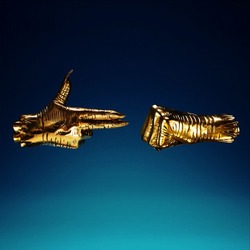 25. Run the Jewels: RTJ3 (2016)
25. Run the Jewels: RTJ3 (2016)
Killer Mike and El-P become full-fledged juggernauts on their third album as Run the Jewels, never compromising, never obstructed. “Militant Michael might go psycho / On any ally or arrival,” Mike warns on “Talk to Me.” “We talk too loud, won’t remain in our places,” El-P snarls on “Everybody Stay Calm.” Run the Jewels have always been fearless, but here they are frank, the threats too real to risk ambiguity. There is zero shade on this album. Instead, there are direct confrontations and call-outs: Don Lemon and cops get their just desserts on “Thieves;” Donald Trump and All Lives Matter get suplexed on “Talk to Me;” reckless retweeters get splayed on “A Report to the Shareholders: Kill Your Masters;” land-grabbing developers in Atlanta’s Cabbagetown neighborhood get blasted on “Don’t Get Captured.” RTJ3 isn’t just a reaction to the shitshow that was 2016; it’s a line-itemized receipt. The beats are just as abrasive. Usual suspects Little Shalimar and Wilder Zoby provide co-production throughout, contributing to some of the most nuclear compositions of El-P’s career. Familiar elements abound—droning synths, cosmic bass, corrosive keys, glitchy sequencing—but the sum total is pure uranium. —Stephen F. Kearse
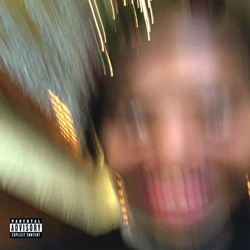 24. Earl Sweatshirt: Some Rap Songs (2018)
24. Earl Sweatshirt: Some Rap Songs (2018)
Hip-hop has always been the proving ground for turning cultural bugs into features. So as the attention spans of the world continues to shrink, artists like Earl Sweatshirt have steered into that particular lane, honing their lyrical ideas to sharp points and punching them skin-deep quickly and efficiently. Hence why these 15 woozy, warped tunes rarely crack the two-minute mark and waste little time jumping to a conclusion. For this rapper/producer, that has to do with a lot of internal reckoning about his errant youth and watching his elders get old and leave this mortal coil. That’s a lot for any 24-year-old to deal with, but Earl finds the dark humor and universal truths in every scattered memory and mouth-watering desire for chemicals of all kinds. —Robert Ham
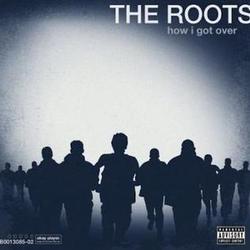 23. The Roots: How I Got Over (2010)
23. The Roots: How I Got Over (2010)
This is the most genre-bending album of The Roots’ 11 LPs. The album opens with Dirty Projectors vocalists Amber Coffman and Angel Deradoorian humming along to a lush piano, before drummer Questlove sparks a fully-formed instrumental revue. It’s the live hip-hop formula that the Roots have done better than anyone, since the group’s inception in the late ’80s. How I Got Over has features from Monsters of Folk, Joanna Newsom, John Legend, and more. It’s a comprehensive essay in the art of hip-hop as a legit musical endeavor. Questlove’s arrangements and the band behind him can go toe-to-toe with the best of ‘em, no matter what the genre. “Radio Daze” could be the album’s most accessible track, in incorporating background soul singers, live instrumentation, a jazz piano, Dice Raw’s silky hook and smooth flows from Blu and frontman Black Thought. This is just a flat-out display of beautiful music. —Adrian Spinelli
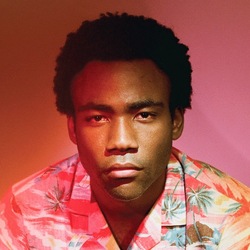 22. Childish Gambino: Because The Internet (2013)
22. Childish Gambino: Because The Internet (2013)
Childish Gambino’s debut album, Camp, was bad. It wasn’t the 1.6 shot heard ‘round the internet bad, but the album was brimful of lackluster. Camp found itself oversaturated with poppy production better suited for Kidz Bop reiterations and childish (pun!) punchlines derivative of the likes of Lil Wayne and a 2000s-era Ludacris. Camp isn’t the only instance of this—it’s the trend that became the rule after repeated offenses on mixtapes. Gambino has frequently struggled to find a sound that isn’t overtly somebody else (mostly Kanye West and Drake). So, here we are with his 2013 release, Because The Internet, a meandering exploration of self. Gambino (née Donald Glover) didn’t completely grasp who he is as a recording artist, but he was almost there. “Crawl,” the album’s opening track, borrows production cues from the Kanye and Friends eras of My Beautiful Dark Twisted Fantasy and Cruel Summer. Sonically, it’s a grandiose tableau of decadence crumbling with force. Gambino is comfortable here, spewing referential punchlines inspired by internet memes: “ain’t nobody got time for that, ain’t nobody gotta rhyme with that,” and at one point he goofily raps “hashtag, niggas be like.” Glover has come a long way since plugging his name into a Wu-Tang Clan name generator and exploring music in his dorm room. Because The Internet was the first release of Glover’s that doesn’t have the mist of amateur work. It’s developed in parts, compelling, and his existential struggles are somewhat realized. Childish Gambino’s growth as a musician in the two years since Camp is commendable. What Gambino did with this album is assuredly parted views; people who will never, under any circumstances enjoy his music are slandering it. Folks who love him dearly were calling it the best thing since seasonings for food. They argued about it because, well, the internet. —H. Drew Blackburn
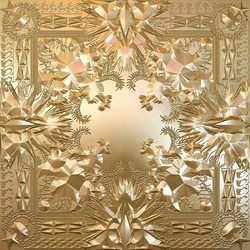 21. Jay-Z and Kanye West: Watch the Throne (2011)
21. Jay-Z and Kanye West: Watch the Throne (2011)
Strange that, for an album built around what might be the most star-studded duo collab in hip-hop history, the first voice you hear on the highly anticipated Watch The Throne is neither Jay-Z’s nor Kanye West’s, but that of former Odd Future soul freak Frank Ocean. “What’s a God to a non-believer?” he croons over a four-to-the-floor pulse and strangled metal guitar riff. Kanye answers: “We formed our own religion; no sin as long as there’s permission.” It’s no surprise that the finest tracks here are those in which the duo take a break guarding their invisible thrones. The stark ballad “Made in America” (featuring a solid but underwhelming Ocean hook) provides fascinating glimpses into Kanye’s past, coupled with his trademark wordplay: “Started a little blog just to get some traffic / Old folks will tell you not to play in traffic / A million hits and the web crashes.” In the Nina Simone-fueled/RZA-produced showstopper “New Day,” both rappers cut the bullshit, dispensing life advice—learned the hard way—directly to their unborn sons: “I’ll never let him ever hit the strip club; I learned the hard way that ain’t the place to get love,” goes one choked-up Kanye couplet. Jay’s catharsis is even more poignant: “Sins of a father make your life 10 times harder / I just wanna take ya to a barber.” —Ryan Reed
 20. Noname: Telefone (2016)
20. Noname: Telefone (2016)
On July 6, 2016, Philando Castile was killed by Officer Jeronimo Yanez, who was later acquitted of the crime despite Facebook video of the incident. Just over three weeks later, Chicago rapper Fatima Warner, aka Noname, released her gorgeous debut mixtape Telefone, a smooth, jazz-inflected listen packed with heartbreaking social commentary about life as a black woman in America. One particular track, “Casket Pretty,” hauntingly echoes the fate of Castile and so many others, as Noname repeats the lines, “I hope you make it home / I hope to God that my tele’ don’t ring” and raps about “Too many babies in suits.” Opener “Yesterday” serves as a woozy, dreamy thesis; she both laments the discrimination people of color face (“Check my Twitter page for something holier than black death”) and finds solace in the smiles of her loved ones. The rest of the record unfurls with the same bittersweetness—contemplative and cerebral, balanced out with a playful plinking piano or sunny “doo doos.” With Telefone, Noname invites us into a meaningful conversation, and we’d all be fools not to be on the other end of the line. —Clare Martin
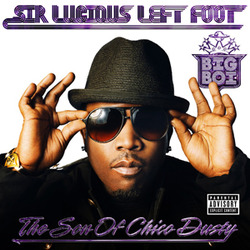 19. Big Boi: Sir Lucious Left Foot: The Son of Chico Dusty (2010)
19. Big Boi: Sir Lucious Left Foot: The Son of Chico Dusty (2010)
Big Boi’s long-awaited post-Speakerboxxx solo album was poised to become the Chinese Democracy of hip-hop—numerous delays, a label change and a protracted production cycle left fans wondering if they weren’t witnessing Dr. Dre’s Detox play out all over again. But four years later, Big Boi finally dropped Sir Lucious Left Foot: The Son of Chico Dusty, a massive, ambitious album shot through with knee-knocking beats and deft lyrical touches from Outkast’s swagger champion. —Michael Saba
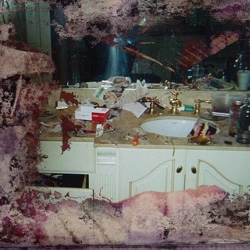 18. Pusha T: DAYTONA (2018)
18. Pusha T: DAYTONA (2018)
The first album to come out of Kanye West’s Wyoming sessions was also the best: Pusha T’s third solo studio album Daytona, originally known as King Push. The lean and mean seven-track LP was the first of five West-produced albums released in summer 2018, but it’s an unquestionable career highlight for the former Clipse rapper. A laser-focused Pusha makes every lyric count, deftly depicting the luxurious life of a drug kingpin-turned-rapper who hardly recognizes the genre he’s spent two decades in (“I’m too rare amongst all of this pink hair, ooh / Still do the Fred Astaire on a brick”). Meanwhile, West’s sample-heavy beats provide Pusha the ideal soundscape—sometimes opulent, others menacing—to swagger over. If you know, you know. — Scott Russell
 17. Drake: Take Care (2011)
17. Drake: Take Care (2011)
Take Care is certainly impressed with itself, but often rightfully so. It’s one of the quietest affirmations of confidence the scene has ever seen. The gorgeous “Marvins Room” was not a specific exception; the record smolders in the same auburn glow—downtempo bass-pulses, dulled synths, tinkering, unattached pianos and Drake’s feathery voice. It’s sexy, progressive, and surprisingly listenable for its hefty 80 minutes. In fact, “Over My Dead Body” is one of the calmest, most wistful openers in rap history. A few simple, James Blake-ian chords, a faraway drum, and Drake in full loosened-tie mode—tossing hearty punchlines like he’s already on a comfortable slope. —Luke Winkie
 16. Travis Scott: ASTROWORLD (2018)
16. Travis Scott: ASTROWORLD (2018)
Hip-hop’s psychedelic era may have reached its peak with Travis Scott’s third studio album. The 28-year-old artist feels barely in control throughout, holding onto a thin thread of reality as dozens of figures float in and out of the room by way of samples or guest appearances. They take on the form of headlining legends (Stevie Wonder, Beastie Boys), pop superstars (Drake, The Weeknd), genre fluid cult heroes (James Blake, Björk, Kevin Parker of Tame Impala) and rising hip-hop stars aplenty. Scott and his team somehow maintain focus, connecting to a throughline that allows him to dangle explorations of his personal life, his somewhat dangerous embrace of fame and his often tenuous grip on the real world. —Robert Ham
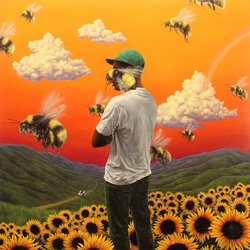 15. Tyler, The Creator: Flower Boy (2017)
15. Tyler, The Creator: Flower Boy (2017)
While hip-hop media has been fixated on the line about “kissing white boys since 2004,” the truth is that Tyler, The Creator’s 2017 album Flower Boy is much more than a revelation about his sexuality. In fact, the reference is only in passing, buried mid-verse on “I Ain’t Got Time!” and again on “Garden Shed” when he says he “thought it was a phase.” Stylistically and lyrically, Flower Boy shows us a softer, more thoughtful Tyler who seems to have moved past the vulgar, sometimes violent rhymes that made Odd Future and his early solo work famous. On Flower Boy, Tyler ditches his shock jock persona and dark, aggressive sound, instead opting for mellow, sun-soaked beats and lyrics that probe emotional complexities. Flower Boy introduces us to a new Tyler that seems interested in cultivating lyrical and sonic beauty instead of testing his listeners’ tolerance for profanity. “See You Again” featuring soul singer Kali Uchis, for instance, is an adorable ode to a crush, with gorgeous, swelling strings and trumpet riffs that are probably the influence of Odd Future-affiliated jazz group The Internet. “911/Mr. Lonely,” featuring Frank Ocean, whose velvety voice is all over the album, makes poetry out of boredom and depression: “Check in on me sometime/Ask me how I’m really doin’/So I never have to press that 911.” Siren-like synths (that will sound familiar to old-school Odd Future fans) and frantic, uneasy drum beats are offset by dreamy strings and jazzy improv, melding Flower Boy’s 14 tracks into a cohesive listening experience that accurately illustrates the rapper’s ups and downs. —Nastia Voynovskaya
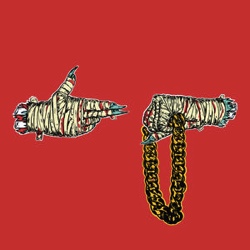 14. Run the Jewels: Run the Jewels 2 (2014)
14. Run the Jewels: Run the Jewels 2 (2014)
Functional hip-hop duos are a rarity. It takes work to balance strong personalities that have a lot to say. It makes you respect what a group like OutKast accomplished, and it explains the appeal of Killer Mike and El-P on Run The Jewels’ ambitious debut album. Hip-hop hadn’t been this fun in a long time. Their second album, RTJ2, was an equally fierce release. The opening track, “Jeopardy,” is the ultimate “LISTEN UP!” moment. And if you didn’t get the message on the first track, then it’s surely chiseled into your core on “Oh My Darling Don’t Cry.” It’s one of the rawest and hardest hip-hop beats to come out this decade with Mike and El-P trading bars. The bass is so encapsulating, and Mike’s “oh my” peppered into the background makes it a haunting experience. They test each other’s hip-hop fluency often. It’s almost as if they’re competing to see who can rap faster, better and more articulately. But there’s a darker undertone to this record than the first time around; they’re happy, but they’re also pissed. Run The Jewels borrows from a range of hip-hop techniques, but they always deliver. You can feel the effort with every syllable, that this music is coming from their very core. It’s a comprehensive essay on the style and vernacular of hip-hop. —Adrian Spinelli
 13. Cardi B: Invasion of Privacy (2018)
13. Cardi B: Invasion of Privacy (2018)
For just a moment, I want you to forget about Offset. Forget about Kulture, Cardi’s instagram rants and those rad Bardi Gang earrings you bought your roommate for Christmas. Cardi B’s celebrity may be a well-earned aspect of her now famous rags-to-riches story (and oodles of fun to observe), but it’s completely irrelevant to enjoying Invasion of Privacy, one of the most uproariously fun rap albums of the decade. The worst thing you can do is dismiss Cardi B because you’re skeptical of her oft-outrageous star text and/or Offset’s notorious stage crashing. The Bronx-born entrepreneur first attracted attention after speaking openly about her work as a stripper on social media. Then, in 2017, she released “Bodak Yellow,” only the second single ever by a solo female rapper to top the charts and a “look at me now” anthem that even rivals Drake’s “Started From The Bottom” in its unapologetic bragging. Turns out, Cardi had lots more “money moves” where that one came from, and her highly-anticipated full-length debut made good on the promise of more self love lyrics, Latin-influenced rap and twerk-worthy trap. There are too many great one-liners to count on album kicker “I Do,” one of Paste’s favorite songs of 2018. “My little 15 minutes lasted long as hell, huh?” Cardi observes, later followed by what might be the best imperative sentiment in music that year: “Leave his texts on read, leave his balls on blue.” “I Do” is Cardi B’s way of saying “I’m done explaining myself,” and in doing so she speaks on behalf of all women who’ve ever been told to shut up. Cardi B does not need a man to make music (or do anything else), and heaven help the fellow who tries to stand her way. SZA anchors the song with the nonnegotiable chorus: “I do what I like.” In 2018, an unapologetic woman was the most powerful voice we needed. —Ellen Johnson
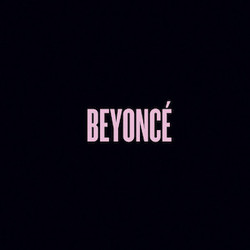 12. Beyoncé: Beyoncé (2013)
12. Beyoncé: Beyoncé (2013)
Regardless of what the music sounds like on Beyoncé’s self-titled fifth LP, the album’s intended significance is hard to overestimate. Considering the unorthodox release, which included music videos for every song and lack of a standard pre-release marketing push, the album was historic, especially considering that, at least initially, it worked, and the sales boomed as they had never boomed previously. Of course, her previous months of touring the world were good marketing; they were just marketing the entity Beyoncé and helped create an atmosphere that was hungry for an album. Then there are the feminist themes, a crucial co-headliner to the Beyoncé talking points. After all, what is the point of making a big splash if you don’t intend to swim? The attention that Beyoncé’s release earned her—and let’s not pretend every Beyoncé release doesn’t get attention, but this turned heads that typically wouldn’t turn—is for good reasons, to perpetuate the pushing of women’s equality into every conversation and the need for reexamination of societal expectations and attitudes toward women, not limited to sexuality, motherhood, the workplace and appearance. And this closing portion of Beyoncé is probably the best of her career, with first single “XO,” previously teased romp “Flawless,” the unabashed, uncompromising tribute “Heaven,” and “Blue,” which concludes the album with a striking similarity to how Arcade Fire’s Reflektor ends, mainly in the atmosphere of the song, though having her daughter guest as a ghostly voice at the album’s finish is slightly unsettling. The appearance of her child seems mostly put there for herself, which is all well and good. It is her album—and her choice. But, just as there’s a fine line between self-love and self-obsession, art often runs the risk of crossing over from personal to self-absorbed. The lack of universality to much of it keeps it from being the great album it wants to be, and some of the fascination seems to stem from 2013 celebrity culture obsession and speaks to the need to disappear from our own lives and become so wrapped up in the world of the rich and famous. Beyoncé does her part to make her world worthwhile, but it is our job to try and do the same. In the end, the success of the album can be measured by whether things actually change, because a million copies sold should be a million changed attitudes, and that would be something pretty special. —Philip Cosores
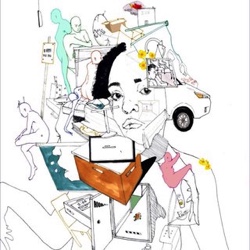 11. Noname: Room 25 (2018)
11. Noname: Room 25 (2018)
In 2016, Chicago rapper Noname, née Fatimah Nyeema Warner, made a brief but unforgettable appearance on the penultimate track on Chance the Rapper’s Coloring Book, the unapologetically joyful collaboration “Finish Line / Drown.” That song also featured T-Pain and Kirk Franklin and others, but Noname, relatively unknown at the time, administered one of its best lines: “The water may be deeper than it’s ever been / Never drown.” On Room 25, the follow-up to her 2016 debut album/mixtape Telefone that she surprise-released in September 2018, Noname helms a collaborative jingle of her own, the empowered “Ace,” which features fellow Midwestern rappers Smino and Saba. They waste no breath in declaring their summary of hip-hop in 2018: “Smino Grigio, Noname, and Saba the best rappers / And radio n****s sound like they wearing adult diapers.” It’s on the album’s first two tracks (“Self,” followed by the observatory “Blaxpoitation”), however, where Noname forges more political waters, delivering deeply important lines of poetry about racism and sexism. “Self” is her documented questioning of everything that’s absurd in 2018 and a breakdown of what it’s like to wade through the music industry as a woman rapper. “My pussy teaches ninth-grade English / My pussy wrote a thesis on colonialism,” she raps, before later asking, “Y’all really thought a bitch couldn’t rap huh?” Through Room 25’s calculated wisps of groove rap and studied waves of neo-soul, Noname proves she’s wise and fortified, and not to be questioned. —Ellen Johnson
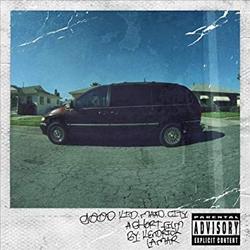 10. Kendrick Lamar: Good Kid, M.A.A.D City (2012)
10. Kendrick Lamar: Good Kid, M.A.A.D City (2012)
Kendrick Lamar’s debut LP opens with a prayer—“Lord God, I come to you a sinner and I humbly repent for my sins,” begins “Sherane a.k.a. Master Splinter’s Daughter”—and his personal quest for redemption bleeds into the next track (the not-so-piously titled “Bitch Don’t Kill My Vibe”) as he reminds us that “I am a sinner who’s probably gonna sin again.” Lamar’s bleak candor is highlighted by voicemail messages from his family members that are expertly woven into the album’s narrative. His father teaches him the true definition of responsibility; his mother pleads with him to return her car and later, towards the end of “Real,” delivers what feels like the album’s mission statement: “When you do make it, give back with your words of encouragement.” —Bonnie Stiernberg
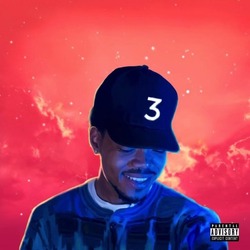 9. Chance the Rapper: Coloring Book (2016)
9. Chance the Rapper: Coloring Book (2016)
Coloring Book, Chance the Rapper’s third mixtape and his second project distributed via Apple, is deafeningly religious, brimming with testimonies, exaltations and blessings that are loud enough to rock a megachurch and its town-sized parking lot. Purged of the drug-addled skepticism of Acid Rap and pulsing with the free-wheeling spirit and zeal that bolstered Surf, Coloring Book is a breezy listen: direct and purposeful. Forgoing a narrative of redemption, repentance or struggle, Chance spends the bulk of the album insisting that he’s already found salvation. But while the volume of Chance’s piety may feel like evangelism, Coloring Book is far from gospel rap. Chance The Rapper feels that he has been blessed with family, friends, talent and opportunity, and few things give him more joy than extolling those blessings. This isn’t the music of someone who’s been born again. It’s the music of someone who is constantly thrilled to still be living. —Stephen F. Kearse
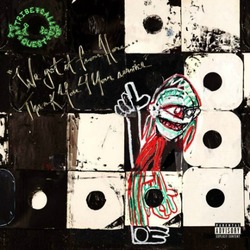 8. A Tribe Called Quest: We got it from Here… Thank You 4 Your service (2016)
8. A Tribe Called Quest: We got it from Here… Thank You 4 Your service (2016)
The Low End Theory and Midnight Marauders are great Tribe albums. But We got it from Here… Thank You 4 Your service is a great Tribe album that has André 3000 and Kendrick Lamar. That’s just math making a strong case that this LP is the best thing this group’s ever done. With absolute certainty, “The Space Program” and “We the People…” are the greatest one-two opening punch in their catalog, and fairly strong arguments that a band would make a better President than our current one. On the latter, these everymen know what unites America (“The ramen noodle”), and they know the bigotry that rips it apart (“Muslims and gays / Boy we hate your ways”). And in one career-best verse on the former, Q-Tip rightfully salutes Confederate flag-capturer Brittany Newsome, the murdered Eric Garner and a doomsday premonition from his own “Excursions.” Inverting a storied history of legendary African-American musicians from Sun Ra to George Clinton to Lil Wayne, Tribe cement their rep as the most earthbound crew of all time: “There ain’t a space program for niggas / You stuck here nigga.” Call it “Incursions.” Yet, We got it from Here… proceeds from one crucial innovation since Tribe last made a record in 1998: the jazz-rap album you cannot relax to. Kendrick himself pioneered this with last year’s unanimously received masterpiece To Pimp a Butterfly, and Tribe’s most political album by miles is almost as fraught. All sorts of arresting, arrhythmic junk clutters their chewiest grooves while Q-Tip, Jarobi and the one-of-a-kind Busta Rhymes one-up their own high-anxiety flows in these secretly recorded tracks like the Navy playing war games. Just listen to Q-Tip’s hiccuping breathlessness on “The Donald” or Busta’s exorcisms on “Dis Generation.” These guys never rapped like this before, and they never will again, at least not in this configuration. —Dan Weiss
 7. Vince Staples: Summertime ‘06 (2015)
7. Vince Staples: Summertime ‘06 (2015)
Though Vince Staples’ proof was already in Stolen Youth, the 2013 mixtape he spit out with Mac Miller (Larry Fisherman), his major label debut—and first official full length—Summertime ’06 acts as an all-consuming testament to a talent far beyond its years. Not to sell Youth short, but Miller’s loosely saccharine production fit a Staples who’s cooled quite a bit since then. On Summertime, the rapper is all ice-cold edge, inside and out: refined, honed, sharp enough to cut subcutaneously. And so, on Summertime ’06, an older, wiser Staples digs in with Clams Casino, No I.D. and DJ Dahi, producers who represent the best of most generations of hip-hop, to help him carve out a sonic space better fit for his aging worldview. In turn, the album is more than an ambitious kind of coming-of-age chronicle—it’s a blithely sad thing, one in which institutional racism (“Lift Me Up”), addiction (“Jump Off the Roof”), and even loneliness (“Summertime”) feel impossible to overcome. Staples hasn’t gotten harder, just smarter—and his producers, balancing industrial clank with cloudy dope-scapes, have allowed him a sturdy vulnerability off which he can bounce his feelings. Though Staples hails from Long Beach—and shared a year of assured hip-hop releases with Boogie, another brilliant rapper from the area who’s finally getting his due—his tracks rarely feel exclusive. Here, he was ready to mine deeper bedrock. And rarely has the sound of an artist scraping bottom been this assured. —Dom Sinacola
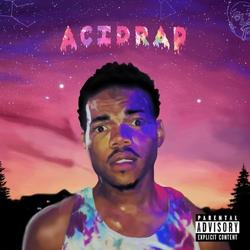 6. Chance the Rapper: Acid Rap (2013)
6. Chance the Rapper: Acid Rap (2013)
On “Cocoa Butter Kisses,” a mama’s boy grows up. Acid Rap is Chance and his rawest, realest and scrappiest, not quite yet a Kanye prodigy with a gospel bent. There’s something so fun and innocent about “Cocoa Butter Kisses,” one of the album’s most re-listenable tracks. Right there in the first verse, after some silly “na-na-nas,” Chance lays out the dilemma of growing up for his growing audience. How can you please both your mom and your friends? “Cigarettes on cigarettes, my mama think I stank / I got burn holes in my hoodies, all my homies think it’s dank.” Acid Rap positions Chance as an angst-ridden up-and-comer, a 20-something unsure of where life will take him next, but he’s sure as hell gonna make the best of where he is at the time. This is a mixtape that became a classic, and it also served as sort of a foreshadowing of where rap would go in the remaining years of the decade: Noname, Saba and BJ The Chicago Kid all have features on the record, plus appearances by Childish Gambino and Vic Mensa. Chance has always had a way of bringing talent together. —Ellen Johnson
 5. Kanye West: Yeezus (2013)
5. Kanye West: Yeezus (2013)
That Kanye’s anointed himself as Jesus’ BFF isn’t surprising: After years of hip-hop domination and high-profile media spectacles, the dude’s made plenty of enemies—Jesus may be the final person he hasn’t totally pissed off. Luckily, Kanye’s still more man than God. Yeezus’ second half is weirder, darker, more introspective—all the qualities that define his best work. The first revelation is “New Slaves,” a racially charged gospel set to a gothic, electro-choral swirl. The first verse alone is masterful—as focused and emotionally affecting as anything he’s ever written (“You see it’s broke nigga racism that’s that ‘Don’t touch anything in the store’ / And this rich nigga racism that’s that ‘Come in, please buy more’”), delivered with a razor-sharp cadence, with an eerie sonic framework that adds urgency to the message. Basically, it’s the anti-”God.” The album closes with “Bound 2,” an old-school College Dropout throwback—built on a warped soul sample, crammed full of classic Kanye observations. It’s a beautiful blast of humanity on an album—a perplexing, fascinating, absorbing album—that often feels outside normal human grasp. —Ryan Reed
 4. Kendrick Lamar: DAMN. (2017)
4. Kendrick Lamar: DAMN. (2017)
DAMN. isn’t the personal journey that 2015’s To Pimp a Butterfly was, and it doesn’t try to be. DAMN. is Kendrick Lamar dead and Kendrick Lamar alive. It is Kendrick Lamar condemned and Kendrick Lamar redeemed. It is a meditation—or rather, a series of meditations—of his technical and emotional capabilities. Those meditations, on subjects explicitly named in songs like “PRIDE.” “LUST.” and “FEAR.” are bound together as an examination of his own existence: his past, his present, his future, his disciples, his worshippers, his enemies and his worldview. When Butterfly came out, Lamar was coronated hip-hop’s king and savior. Here he embraces the image, turning himself into messiah and martyr. He finds himself crucified on the very first track—his desire to do good, his outstretched hand to the blind of the world, turned upon him and used to undo him. On “DNA.,” he’s “Yeshua’s new weapon,” born of Immaculate Conception and eager to lead his people. But Kendrick Lamar is not Jesus. He can’t help being human, and like the best among us, he is capable of, and often beholden to, a dark part of the mind. In highlighting the struggles inherent in his morality, he forces his listeners to consider their own. —Carter Shelter
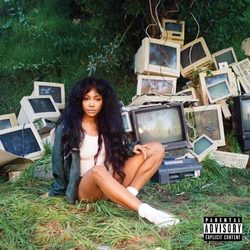 3. SZA: Ctrl (2017)
3. SZA: Ctrl (2017)
The first lady of Kendrick Lamar’s Top Dawg Entertainment, SZA acquired a cult following with her 2014 mixtape Z, a downtempo project rife with ambient beats and understated vocals—a pleasing combination for fans of artists like XXYYXX and Sky Ferreira. On her debut LP, SZA trades Z’s whispery vocals for a robust timbre steeped in jazz and soul, evoking Amy Winehouse and earlier predecessors like Billie Holiday. In keeping with jazz tradition, there’s an improvisatory quality to the way she sings throughout the album, unraveling structured pop hooks with stream-of-consciousness riffs and scat-like repetition. But in contrast to the self-seriousness that often comes with impressive vocal chops, Ctrl is comically blunt: “Highkey, your dick is weak, buddy / It’s only replaced by a rubber substitute,” she croons on “Doves in the Wind.” It’s lines like these that make Ctrl feel as intimate and fun as a slumber party with your best girlfriends. —Nastia Voynovskaya
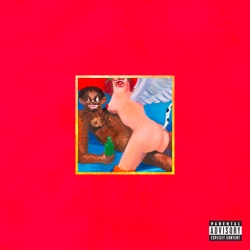 2. Kanye West: My Beautiful Dark Twisted Fantasy (2010)
2. Kanye West: My Beautiful Dark Twisted Fantasy (2010)
Kanye West has always been on the tip of pop culture’s tongue and this is his most well-rounded endeavor. This is where he first plucked a quaint indie rock vocalist in Bon Iver’s Justin Vernon, weaved him masterfully into his own hip-hop fabric and vaulted the mixture of the two. The whole album is wrought with expansive productions from the sparkle of “All of The Lights” featuring Rihanna, to the beautiful balladry of “Blame Game” featuring John Legend. Kanye West’s persona elicits strong reactions, but MBDTF flashes the musical genius of pop culture’s most polarizing figure. —Adrian Spinelli
 1. Kendrick Lamar: To Pimp A Butterfly (2015)
1. Kendrick Lamar: To Pimp A Butterfly (2015)
This is what thoughtful hip-hop is supposed to sound like. This is the product of a rapper who quickly rose to the upper echelon of hip-hop and took a long hard look at the scope of the scene and more importantly, himself, before letting out a visceral, imaginative and musically ambitious production that demands your attention. TPAB further develops jazz fusion in hip-hop with seasoned collaborators in Flying Lotus, Kamasi Washington, Thundercat, Robert Glasper, et al., producing a live sound that’s compositionally rich, instrumentally complex and flat-out interesting. Yet, the sceptre for all of TPAB’s energy is Lamar, who brings himself to his knees on deeply reflective jams like “King Kunta” and “How Much A Dollar Cost.” TPAB is a call-out of the hip-hop establishment, by perhaps its most self-aware figure, who has no trouble exploring his own vulnerability in order to paint an accurate picture of the harsh, dynamic and inspiring times we’re still living in today. —Adrian Spinelli







































